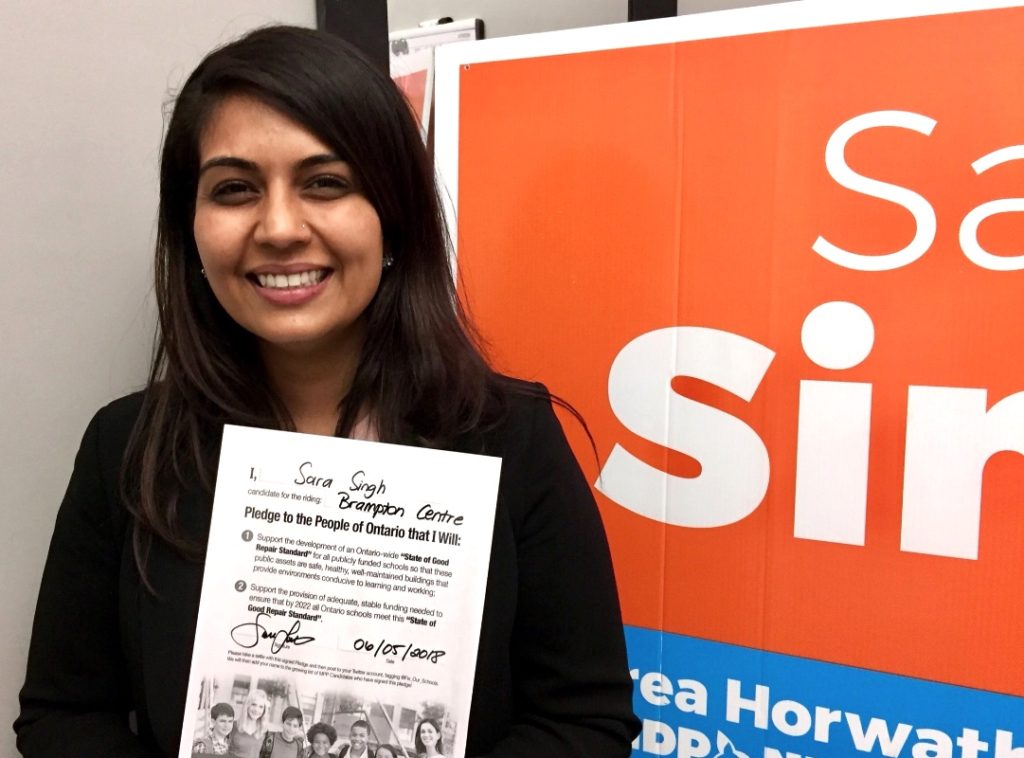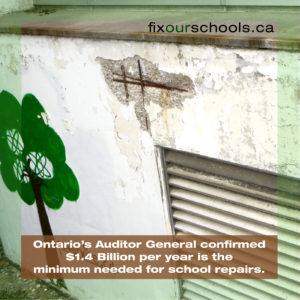Since the COVID-19 pandemic shuttered Ontario’s schools in mid-March 2020, the Ford government has offered financial support to individual families to offset the costs of supporting their children’s learning amidst the pandemic.
- Between April 6 and August 31, 2020, families could apply for a program called “Support for Families”, which would provide a one-time payment, per child, of $200 for children aged 0 to 12 and $250 for children or youth aged 0 to 21 with special needs. As per the Ministry of Education website, “this funding was offered to help parents with the costs of work books, educational apps, educational subscription services, movies and other tools to support learning at home”
- On November 5, the Ford government released its annual budget, and announced it would extend an additional one-time payment to families of $200 for children aged 0 to 12 and $250 for children or youth aged 0 to 21 with special needs. “This funding was offered to help families access workbooks, school supplies, and technology to help their child’s learning this year”. The initial deadline to apply through the Get Support for Learners government webpage was originally January 15, 2021 but this deadline has been extended to February 8, 2021.
According to the November 5, 2020 CTV News report entitled, “Ontario parents will get another $200 payout to help with education costs”, the Ford government will spend $380-million on the second round of payments, on top of the $378-million for the first batch of payments. Rod Phillips, Finance Minister for the Ford government at the time, said this was “money well spent.”
On December 22, the Ford government announced that it would extend the same $200/student payment for students aged 13-through until Grade 12. Using 2016 Census Data for Ontario, Fix Our Schools estimates approximately 1-million students fall in this age range, meaning an estimated additional $200-million of government spending on this benefit. The application process for families to apply through the Get Support for Learners government webpage for children aged 13-18 opens January 11, 2021 and closes February 8, 2021.
The direct payments listed above are available to families of students who attend public schools, private schools, First Nations operated or federally operated schools, or are homeschooled. In total, they could equate to up to $958-million ($380-million + $378-million + $200-million) in government support directly to families for education amidst the COVID -pandemic.
Some would approve of the approach that the Ford government has used here – getting money directly into the hands of parents and guardians as quickly as possible, with as little red tape as possible. And there are certainly economic arguments for taking this approach.
More money directly in the pockets of moms and dads across our province.
We will get through this together. pic.twitter.com/L0H42tkoSc
— Stephen Lecce (@Sflecce) November 6, 2020
However, others would vehemently disapprove of this approach, citing equity concerns such as:
- Will the families who need support the most even apply to receive this payment due to awareness, access to technology, and time to apply?
- Will the direct payment amount provided yield any real benefit for the education of children in this most challenging of times, when compared to benefits that may be yielded if this $958-million of provincial funding had been invested collectively in schools and education?
That paltry sum of 200$ should have gone into lowering class sizes and ah yes, where's the funding to @Fix_Our_Schools Failing grade @Sflecce https://t.co/1SHK4PyHki
— Cheri DiNovo (@CheriDiNovo) November 7, 2020
The Fix Our Schools campaign has always focused on ensuring that publicly funded schools in Ontario are safe, healthy, well-maintained buildings that provide environments conducive to learning. The only mechanism within the current provincial funding formula to achieve this goal is for our provincial government to invest collectively in Ontario’s 5,000 schools. So why on earth, when we all knew back in the spring that ventilation in classrooms was key to safety, did the Ford government only invest $50-million in improving school ventilation?
Ontario schools have $16.3 BILLION in disrepair due to inadequate, unstable provincial funding. #onted #onpoli
Here's an item that need maintenance/replacement:
💨💨Ventilation Systems. https://t.co/G5apZJA3ff— Fix Our Schools (@Fix_Our_Schools) August 12, 2020
We also question why the Ford government has done nothing to invest in ensuring that elementary students have the space in classrooms required to properly physical distance, knowing early on in the pandemic that this is a key success factor? Furthermore, we question why the Ford government has only invested $15-M collectively in technology for schools amidst this pandemic? Minister Lecce made an announcement on Saturday, January 9th, and shockingly, to quote NDP Education critic Marit Stiles and NDP Childcare critic Doly Begum:
“It’s desperately frustrating for parents that Stephen Lecce got in front of the cameras, and didn’t announce a single measure to make schools safe to re-open. This government doesn’t want to invest in schools, and that’s putting our kids’ health and their education at risk.”
The COVID-19 pandemic has laid bare the fact that school infrastructure in this province has been chronically and grossly underfunded by successive provincial governments (and federal governments in the case of First Nations schools). Prior to the pandemic, there was $16.3-billion of disrepair in Ontario’s publicly funded buildings. A society cannot ignore infrastructure for decades and then expect that infrastructure to be resilient and safe amidst a pandemic. Knowing that the only source of funding for school infrastructure is government funding, Fix Our Schools believes that more collective investment by the Ford government is desperately needed – to address ventilation issues in classrooms, to ensure students have enough space in classrooms to properly distance, to buy the technology that school boards need to ensure all students have what they require to learn to name but a few collective investments. If you share our concerns and want the Ford government to take immediate steps to make the investments required to get all Ontario students back to in-class learning in schools, then please take one minute to send this letter to Premier Ford and your local MPP.
However, we also acknowledge that many families may benefit greatly from the direct payments from the Ford government, so if your family will benefit from the direct payments being offered by the Ford government to help with student learning, please ensure you apply before February 8, 2021 by visiting the Get Support for Learners government webpage. If your family circumstances are such that this direct government payment is not really needed, perhaps consider applying for it, regardless, and then donating the money? An idea to consider.
Fix Our Schools shares the frustration of opposition parties with the Ford government’s lack of investment and lack of action to date to ensure students could be safe to learn in-person, clearly the best option for all students.
Watching the Minister of Ed now. Expressing lots of concern. Where’s the commitment to comprehensive asymptomatic testing? To smaller class sizes? It’s not enough to close schools. There must be a plan to re-open safely. They know what needs to be done and continue to refuse.
— Marit Stiles (@MaritStiles) January 9, 2021
Fix Our Schools feels deep frustration on behalf of the children, teachers, principals, education workers, families, and school boards who have been and continue to be subject to the half-measures and lack of investment and action by our provincial government. Back in late August, Premier Ford said, “We’re really relying on school boards. I just told them I have all the confidence in the world that they’re going to be able to get through this and make sure that the students and the staff are in a very safe environment”. Premier Ford – you cannot continue to underfund schools and education, and then pass the buck to others to work miracles. Fix Our Schools believes that additional collective investment in schools and education is the only way forward, even though this investment would be coming much later than it ought to have been delivered. What do you think?




